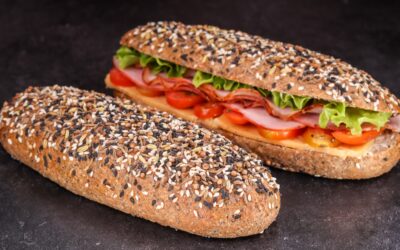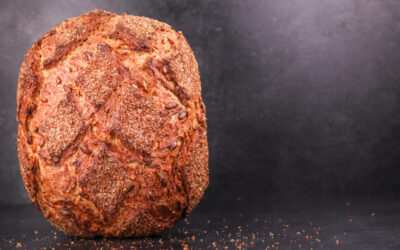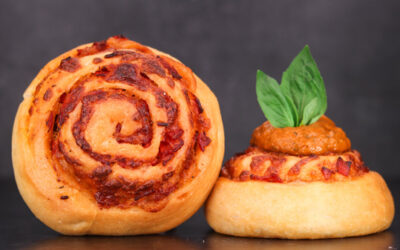I’m sure a lot of us overindulged during the holidays. But not to worry! Here is a recipe to help with your new year’s resolutions. A nutritious and delicious multi grain whole wheat bread.
This whole wheat (or wholemeal as we call it here in the UK) bread is packed full of nutritious grains and seeds. Oats, cornmeal, sunflower seeds, sesame seeds, and more. You can adjust this recipe to suit your taste. Simply swap the seeds for your favourites. The grains can be adjusted too. The addition of olive oil gives the bread a slight richness.
There are a couple of techniques that make this bread special. One of them being the use of a soaker. A soaker is made by mixing seeds and/or grains with water and letting them absorb the liquid and hydrate. This helps with softening the grains and seeds making them gentler on your teeth. But it also helps us increase the dough hydration and that in turn makes the baked loaf stay softer and moister for longer.
Another technique here is cold bulk fermentation. The dough is fermented in the refrigerator for up to 18 hours. It develops a more pronounced flavour and slight acidity also improving the bread’s keeping quality. During a long proof the flour and the grains can absorb the water even more making the dough easier to handle and bake.
Cold proofing is a great method for baking on a busy schedule as you can leave the dough in the fridge and continue when you have time to do so.
This recipe is adapted from Jeffrey Hamelman’s book ‘Bread: A Baker’s Book of Techniques & Recipes’. I have learned most of what I know from this book and if you are into baking, then it’s well worth checking out. You can find it in my Amazon shops linked below.
Watch the video down below for detailed instructions.
Ingredients
For the soaker –
40g (1.4oz) oats
30g (1oz) sunflower seeds
30g (1oz) cornmeal
30g (1oz) oat flakes
20g (0.7oz) sesame seeds
160g (6.7oz) water at room temperature if your kitchen is between 20C – 22C (68F – 72F).
For the main dough –
200g (7oz) white bread flour
150g (5.3oz) whole wheat flour
30g (1oz) wholemeal rye flour (dark rye flour)
15g (0.5oz) olive oil
9g (0.3oz) salt
4g (0.14oz) instant dry yeast or 4.8g (0.16oz) active dry yeast or 12g (0.42oz) fresh yeast
240g (8.4oz) cold water *
*To learn more about dough temperature control click here.
Method
- Make the soaker. In a large bowl combine the oats, sunflower seeds, cornmeal, oat flakes, sesame seeds, and water. Mix well. Cover and leave to hydrate for 1 hour.
- Make the dough. Add the water, yeast, salt, olive oil, rye flour. Mix well to dissolve the salt and hydrate the yeast. Add the whole wheat flour, and white flour.
- Mix until there is no dry flour left. Tip the dough out on the table.
- Leave to sit for 15 minutes. This step will help the flour absorb the water and make the dough easier to knead.
- Knead the dough using the stretch & fold method for 10 minutes. It will be sticky, but don’t get discouraged. Scrape it up occasionally and keep going. *Desired dough temperature around 23C (73F).
- Place the dough in a bowl. Cover and refrigerate for 1 hour.
- Fold. This will help with cooling the dough down evenly.
- Place the dough back into the fridge and leave to cold proof for 12 – 18 hours.
- Dust the dough with some flour, tip it out on the table and shape You can make a boule or batard.
- Dust with flour again to prevent it from sticking to the basket and place it in with the smooth side down.
- Cover and ferment for 3 – 4 hours or until well puffed up and wobbly. The final proofing time will depend on the temperature of your kitchen. *During the final hour of fermentation preheat your oven and baking vessel to 220C (430F) fan off.
- Invert the dough onto the hot pan. Score. Cover with a lid and bake for 20 minutes.
- Remove the lid and bake for another 20 – 25 minutes until the crust in nicely browned all over.
Cool down and enjoy! This bread will stray fresh for quite some time.
Keep in mind that the conditions in each kitchen are different, so fermentation times may vary for you. It is up to the baker to control the bread and react accordingly.
Your oven may be different too, so your baking time may vary.
Watch the video here



